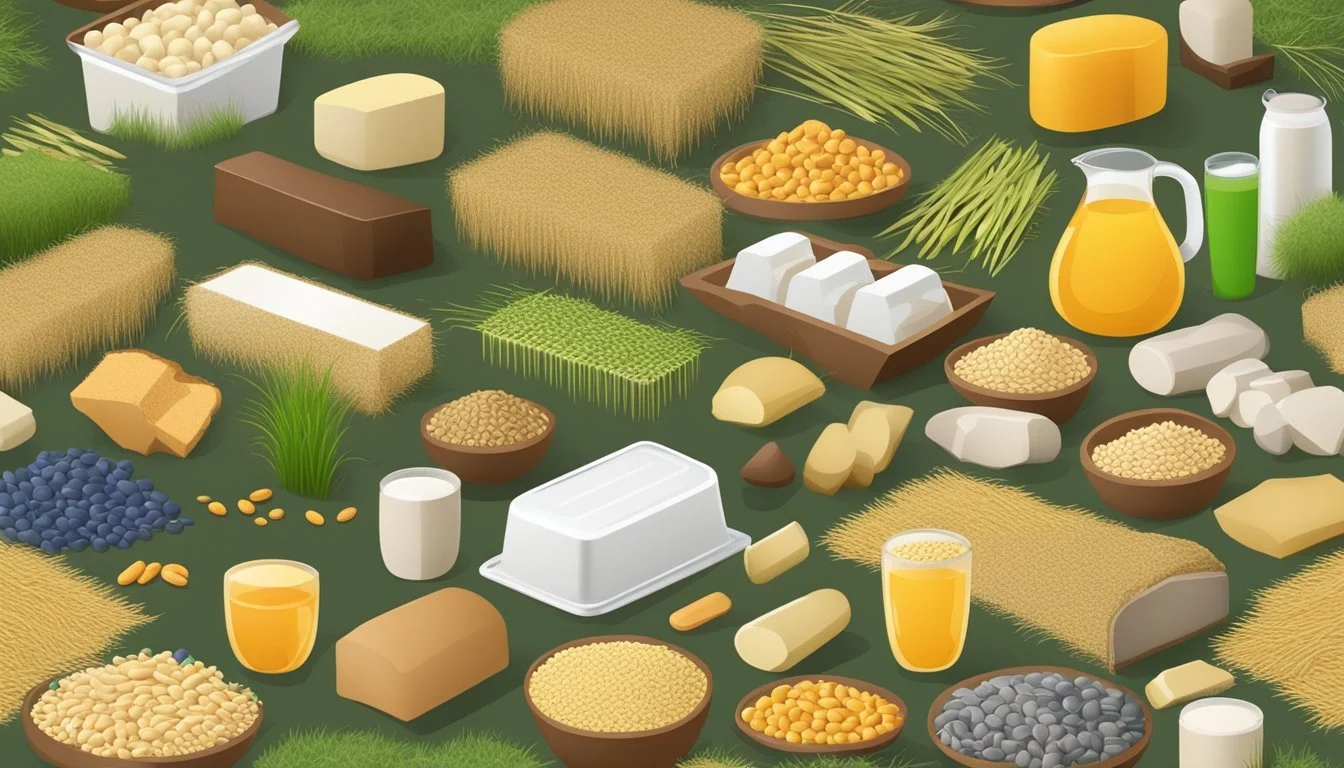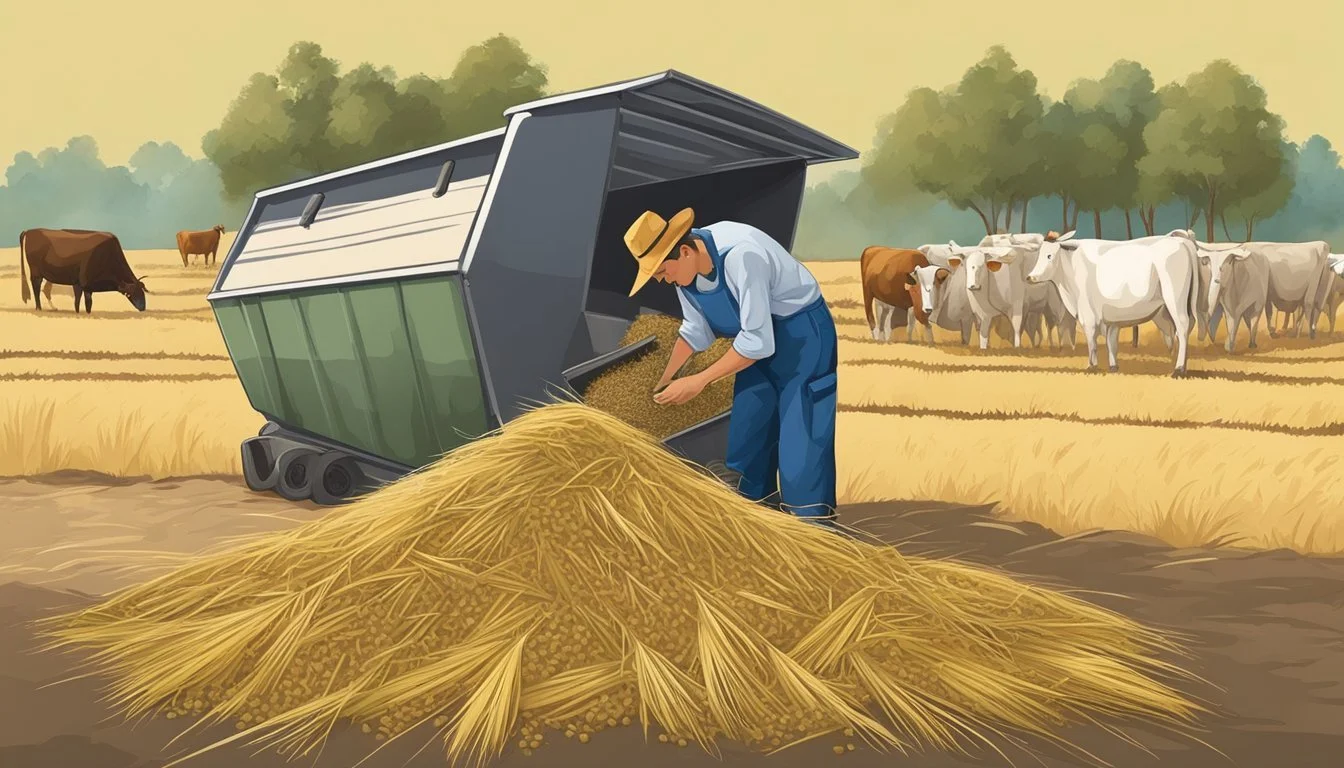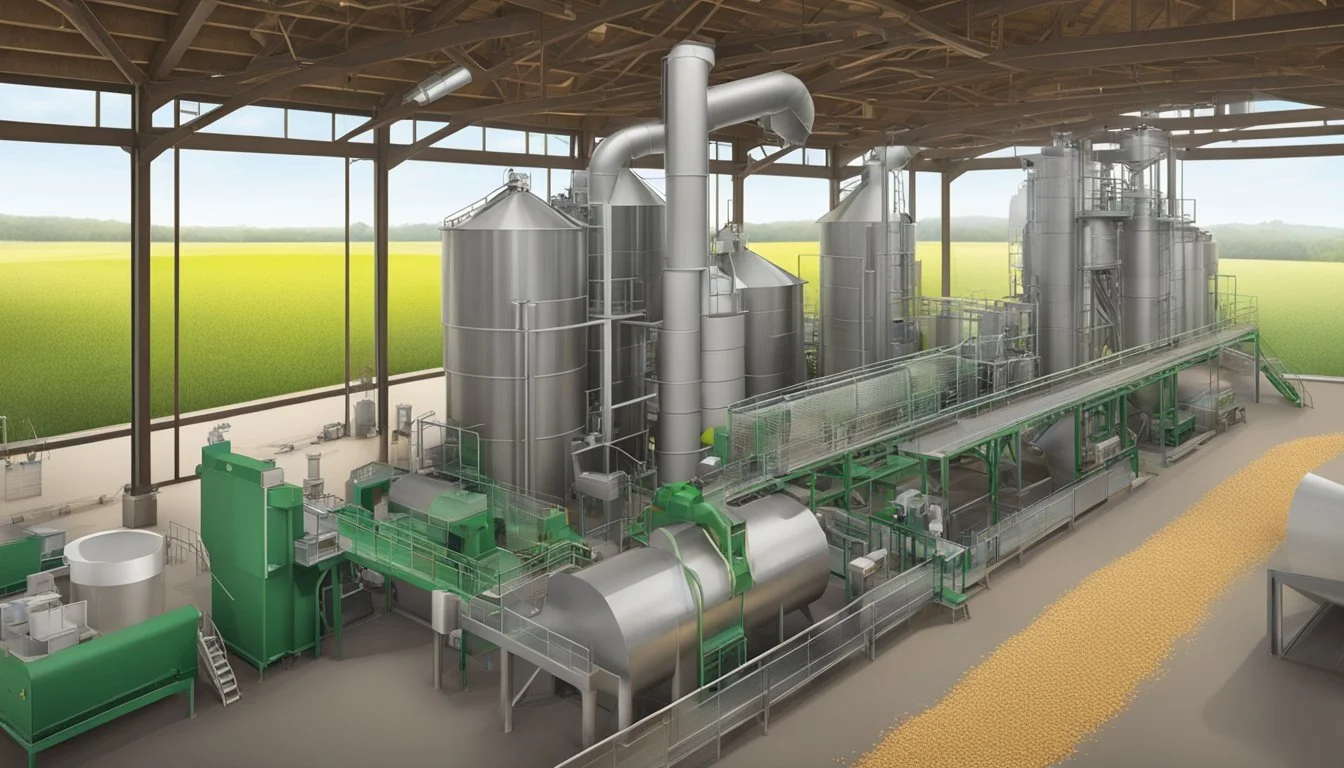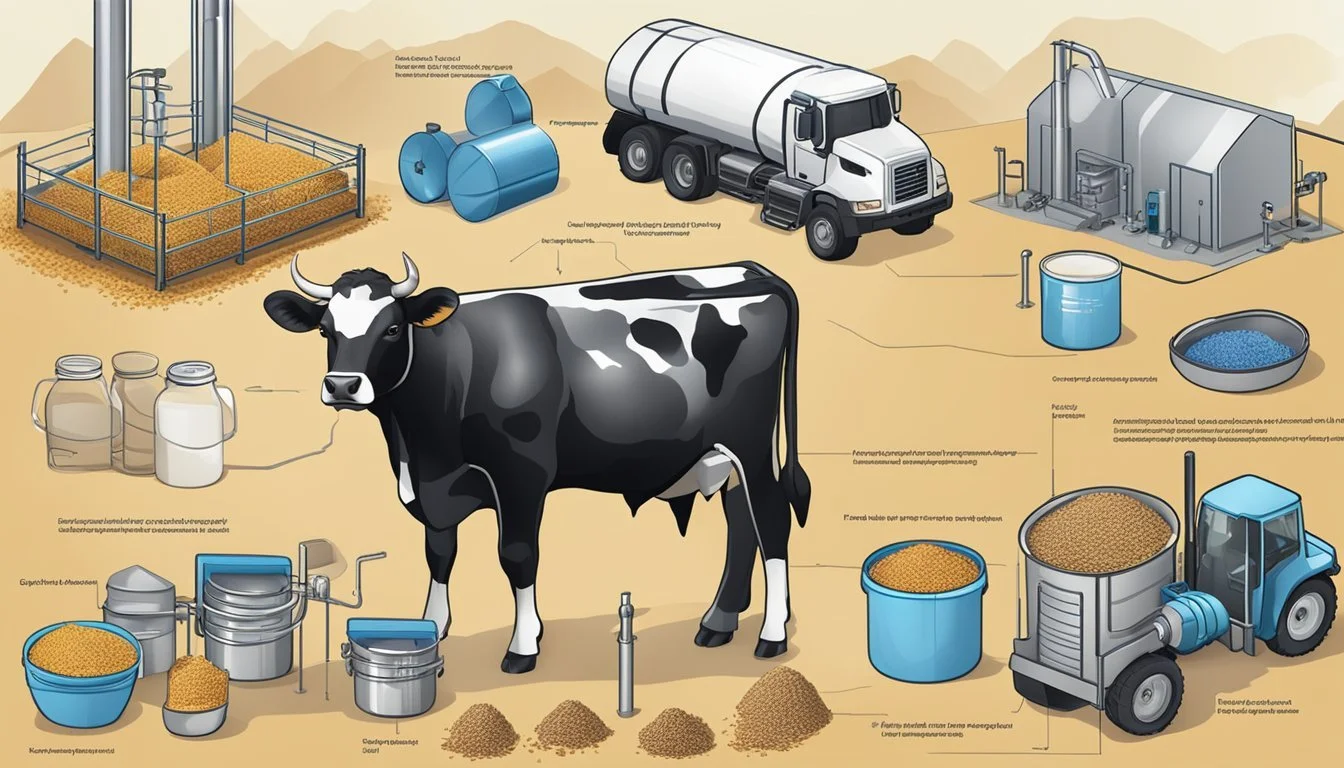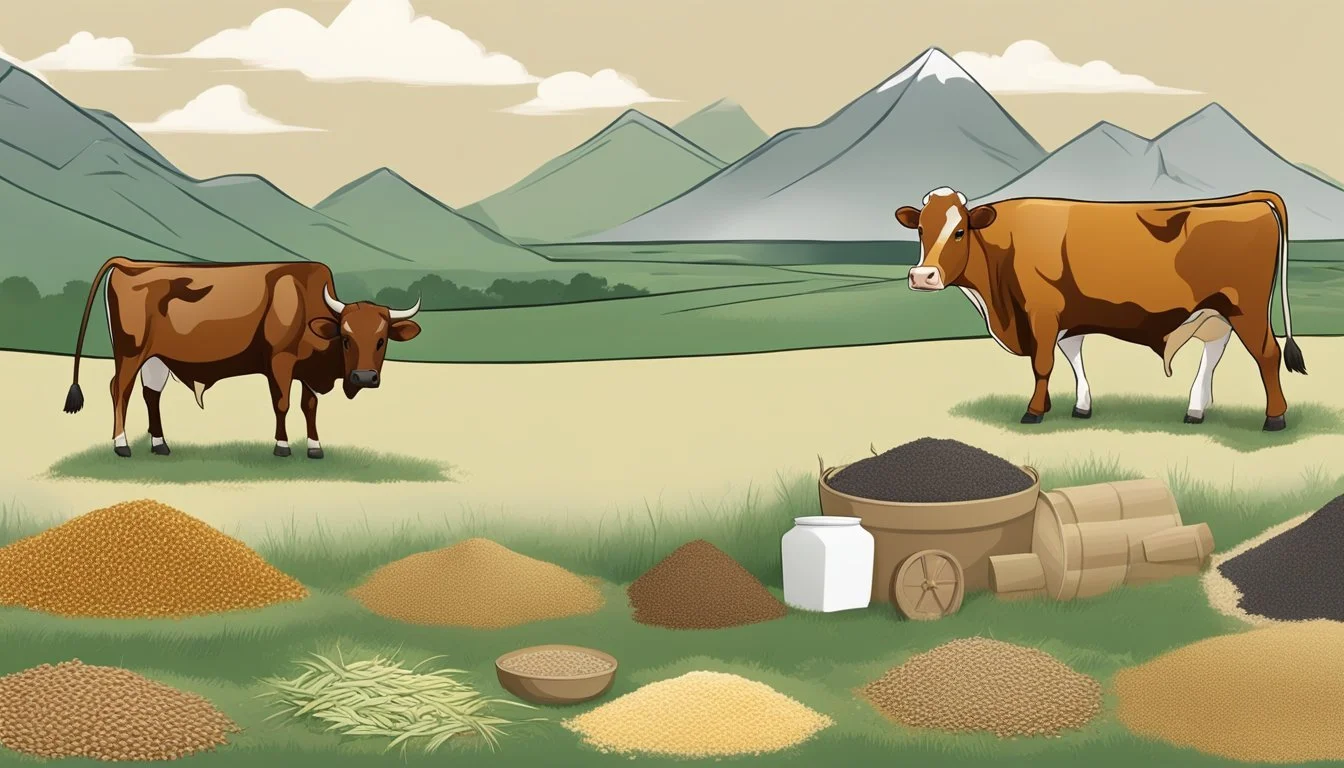How do I create a balanced cattle ration?
Essential Tips for Optimal Nutrition
Creating a balanced ration for cattle is an essential component of a successful beef operation. A balanced ration ensures that cattle receive the right amounts of energy, protein, vitamins, and minerals required for growth, maintenance, and reproduction. Nutrition plays a crucial role in the overall health and productivity of the herd. Each animal's nutrient requirements can vary based on its weight, age, breed, sex, and stage of production, making it important to tailor the ration to the specific needs of the cattle being fed.
Carefully formulated rations can maximize efficiency and minimize feed costs, which are often the largest expense in cattle farming. To achieve this, farmers and feedlot managers must consider the nutritional value of available feed ingredients and how these can be combined to meet the daily requirements of beef cattle. Using a variety of feeds can provide a more complete nutrient profile and prevent deficiencies.
It's important for producers to understand that balancing a ration is not solely about meeting energy and protein needs. It also requires a focus on proper fiber content to ensure rumen health, as well as appropriate levels of vitamins and minerals. For growing cattle in particular, the ration influences not just current health but also future productivity. Effective ration formulation supports desired growth rates and prepares cattle for subsequent production phases.
Understanding Cattle Nutritional Needs
Creating a balanced cattle ration is crucial as it directly affects health, growth, and productivity. This section delves into the specific nutritional components necessary for cattle at varying stages of life and production.
Essential Nutrients for Cattle
Cattle require several essential nutrients to maintain healthy bodily functions. These include:
Proteins: Essential for growth and repair of body tissues.
Energy: Supplied by carbohydrates and fats in the diet for daily activities and digestion.
Fiber: Critical for proper rumen function and digestion.
Minerals: Such as calcium and phosphorus, they are vital for bone development and other metabolic processes.
Vitamins: Necessary in small quantities for various physiological functions.
Each of these nutrients plays a pivotal role in cattle feed, influencing overall health and performance.
Influence of Age, Weight, and Stage of Production
Nutrient requirements in cattle vary with age, body weight, and stage of production. For instance, growing heifers and steers need a diet higher in protein to support their rapid development, while mature beef cattle might require more energy-dense diets to maintain their body condition. Lactating cows have increased needs for energy and protein to support milk production. Similarly, the nutrient demands are distinct for bulls, which might need higher energy for breeding purposes.
Nutrient Requirements by Animal Class
The classes of cattle—calves, heifers, steers, bulls, and cows—each have unique nutrient requirements:
Calves: Need colostrum initially, then transition to a diet high in protein for growth.
Heifers: Require a balanced diet to support growth and eventual pregnancy.
Steers: Focus is on a high-energy diet for muscle development and weight gain.
Bulls: High-energy and adequate protein to maintain weight and support breeding activity.
Beef Cattle: Their nutrient needs differ based on whether they're in a growth, maintenance, gestation, or lactation phase.
Body weight and breed can also influence the amounts of nutrients required, as different breeds and sizes of cattle metabolize feed differently. Understanding and implementing this knowledge into ration design ensures that cattle receive the nutrition they need for their specific class and life stage.
Components of Cattle Rations
Creating a balanced cattle ration is an essential aspect of livestock management. A well-formulated ration meets the nutritional requirements of the cattle, promotes healthy growth, and supports overall productivity.
Common Feedstuffs and Their Nutritional Contributions
Feedstuffs form the core of cattle rations and vary in nutrient composition. Corn is a high-energy grain rich in carbohydrates, commonly used to add calories in a diet. Soybeans contribute significantly to the ration by providing crude protein (CP) and essential amino acids, improving the overall protein content of the diet. Supplements may be added to ensure the cattle receive all their nutrient requirements, often including minerals, vitamins, and additional protein or energy sources.
Corn: High in energy, low in CP
Soybeans: High in CP, essential amino acids
Supplements: Vitamins, minerals
Forage as a Ration Foundation
Forage is the backbone of cattle rations due to its beneficial fiber content, which aids in digestion and provides bulk. It includes grass hay, corn silage, and other roughage forms necessary for proper gut function. Neutral detergent fiber (NDF) is a key marker of forage quality, indicating cell wall content that affects digestibility. Total digestible nutrients (TDN) represent the sum of all nutrients in the forage that are available for digestion by the cattle.
Corn Silage: Higher energy, contains more moisture
Optimal forage will have a balanced NDF and TDN content to support cattle health.
Grain and Supplement Inclusion
Grains such as corn and small grains introduce additional energy to the ration. When forage alone cannot meet the energy demands, feedlots often include more calorie-dense grains. However, the ration must be properly balanced between forage and grain to prevent digestive disorders. Supplements are formulated to bridge the gap between the actual nutrient intake from the forage and grains and the cattle's nutrient requirements. They may include components such as dry matter (DM), additional CP, and specific minerals or vitamins to target deficiencies.
Grain-to-Forage Ratio: Carefully balanced to prevent digestive issues
Supplemental Needs: Address specific nutrient deficiencies
Precise calculation of DM, CP, and other nutrients ensures a well-rounded ration.
Formulating a Balanced Ration
Creating a balanced cattle ration is critical for efficient growth and production. Proper diet formulation ensures the cattle receive all the necessary nutrients to meet their daily requirements, supporting overall health and productivity.
Diet Formulation Principles
The cornerstone of a balanced ration is understanding the specific needs of the cattle based on age, weight, growth rate, and production goals. Total Digestible Nutrients (TDN) and Crude Protein (CP) are two primary components that must be calculated accurately. A balanced ration optimally combines forages, grains, protein feeds, and minerals, along with adequate water provision.
TDN includes the sum of all digestible organic nutrients in the feed: carbohydrates, fats, and proteins.
CP accounts for the amount of protein in the feed that is available to the animal.
Calculating Total Digestible Nutrients and Crude Protein
Nutrient analysis is essential for determining the content of the available feeds and is typically carried out in a laboratory setting. These analyses provide data on the TDN and CP of various feed components. The diet must offer enough energy, typically measured as TDN, to support the energy demand of the cattle's body functions and activities.
To quantify a balanced ration:
Measure the energy content (TDN) in each feed ingredient.
Calculate the CP percentage needed based on cattle type and physiological stage.
Adjust feedstuffs levels to match these requirements.
Using Pearson Square for Ration Balancing
The Pearson Square method is a simple technique applied to balance two feedstuffs to reach the desired proportion of Crude Protein in a diet. This method helps calculate the correct amounts of each feed ingredient required to achieve a balanced ration.
To use the Pearson Square:
Place the desired CP percentage at the center of the square.
Write the CP percentage of the higher protein feed on the top left corner and that of the lower protein feed on the bottom left.
Subtract diagonally, placing the differences on the right side of the square, opposite their respective feed ingredient.
The resulting figures provide the proportions of each feedstuff to mix to form the balanced ration.
This approach offers a direct and efficient way to formulate rations that support cattle health and production when dealing with two primary feedstuffs.
Assessing and Adjusting Feed Components
Creating a balanced cattle ration hinges on precise assessment of feed components and their adjustment to meet nutritional needs. A thorough nutrient analysis ensures that cattle receive the required protein and energy, while adjustments for feed efficiency contribute to cost-effective growth. Managing feed intake is vital to prevent underfeeding or overfeeding, which affects both health and production.
Nutrient Analysis of Forages and Grains
Nutrient analysis is the first step toward a balanced ration. Forages and grains should be tested for protein content, energy density, and other essential nutrients. Laboratories can provide detailed reports of the nutrient composition. Operators can then match their cattle’s nutritional requirements with the feed’s profile. It is crucial to ensure that forages and grains meet the specific stage and purposes whether for growing, finishing, or maintaining adult cattle.
Adjusting Rations for Feed Efficiency
Optimizing feed efficiency involves adjusting the energy and protein levels within the ration to support desired average daily gains. When the initial ration does not meet performance expectations, it may need enhancement with additional grains or protein supplements. By monitoring weight gain in relation to feed consumed, producers can make data-driven decisions to improve efficiency. This is a balancing act to maintain cattle health while maximizing growth rates.
Managing Feed Intake
Feed intake should be managed to match the animal's growth phase or reproductive status. Overfeeding leads to waste and potential health issues, while underfeeding can result in poor growth performance. Tools like the Cattle Grower Ration Balancing Spreadsheet Program help in calculating the amount of each feedstuff required. Intake levels should be consistent, and adjustments should be made as cattle progress through different stages of development or as forage quality changes throughout the year.
Practical Considerations for Ration Management
Creating a balanced ration for cattle is a complex task that requires attention to economic efficiency, availability of feed ingredients, and the specific needs of different cattle breeds and conditions.
Economic Factors and Cost-efficiency
Cost is a central factor for producers when managing cattle rations. Finding low-cost feed options that do not compromise nutritional quality is key to maintaining profit margins. Producers often rely on local grain prices and the availability of by-products as economical sources. For example, growing cattle typically have diets consisting of formulated rations that take into account the cost of feed ingredients versus their expected weight gain.
Feed Ingredient Availability and Alternatives
The availability and cost of feed ingredients can fluctuate, making it critical to have alternative options. Commodities like corn silage, which can be valued at nine times the bushel price of corn grain, serve as a stable feed source. Producers should consider local and seasonal availability, utilizing resources like crop residues or by-product feeds to substitute traditional ingredients without sacrificing the diet's nutritional balance.
Ration Adjustments for Specific Breeds and Conditions
Cattle breeds have distinct nutritional needs based on their genetic makeup and production goals. For instance, Angus cattle might require different ration formulations compared to Charolais due to variations in growth rates and carcass composition. Dairy breeds also have specific requirements to optimize milk production. Adjustments must be made to ensure that the ration supports the health and productivity of the breed in question, paying close attention to their protein, energy, and fiber needs for optimal performance.
Ensuring Herd Health and Performance
Creating a balanced cattle ration is crucial for both the health and performance of the herd. Proper nutrition leads to optimal weight gain, growth, and feed efficiency while reducing the risks of poor growth, impaired health, respiratory issues, and digestive upsets.
Monitoring Health and Growth Indicators
Regular monitoring of cattle is essential for maintaining herd health and performance. Key indicators include:
Weight Gain: Track average daily gain to ensure cattle are reaching target weight goals.
Body Condition Scoring (BCS): Assess body fat reserves to manage feeding and maintain optimal body weight (BW).
Growth Metrics: Measure frame size and muscle development to determine if growth is on track.
Health Observations: Monitor for signs of respiratory issues or digestive upsets, which can indicate nutritional deficiencies or imbalances.
Mitigating Negative Effects of Poor Nutrition
To prevent negative effects associated with poor nutrition, consider these strategies:
Balanced Diet Formulation: Ensure diets meet the nutritional requirements tailored to the cattle's age, weight, and production stage.
Observation and Adjustment: Be vigilant about cattle behavior and physical appearance to quickly adjust diets as needed.
Strategies for Enhancing Feed Utilization
Maximizing nutrient utilization is a cornerstone of an efficient feeding program:
Ration Quality Control: Regularly test feed components for quality and adjust rations promptly to maintain high nutrient availability.
Feed Processing: Optimize the physical form of feed to enhance digestibility and nutrient absorption.
By focusing on these specific strategies, the health and performance of cattle can be effectively managed, leading to a more successful and productive herd.
Advanced Nutritional Strategies and Technologies
Developing a balanced cattle ration incorporates the use of feed additives, supplements, and cutting-edge nutritional technologies designed to enhance growth. By judiciously applying these advancements, cattle producers can optimize feed efficiency and animal performance.
The Use of Feed Additives and Supplements
Feed additives and supplements play a crucial role in cattle nutrition by targeting specific dietary needs and compensating for deficiencies. Ionophores, for example, are widely used as feed additives to alter rumen fermentation patterns, resulting in improved feed efficiency and animal growth rates. They also help reduce the incidence of certain diseases like coccidiosis. Additionally, steroidal implants are common supplements that, when used responsibly, can markedly increase growth rates because they promote lean tissue accretion through modified hormonal growth regulation.
Antinutritional factors in feed ingredients can detrimentally impact cattle health and productivity. Rigorous management of these factors, through the incorporation of specific feed supplements, ensure that cattle get the most nutritionally from their feed without negative impacts.
Nutritional Technologies for Enhanced Growth
Cattle producers often leverage nutritional technologies to refine the growth and health of their herds. This can include sophisticated ration balancing programs, which help to formulate diets that meet the precise nutrient requirements of cattle at different ages and stages of production. Combined with good pasture management practices and feed supplementation, advanced ration formulation can lead to more efficient meat production and greater overall profitability. Utilizing technology for ration balancing takes into account the dynamic nutritional demands, reducing waste and optimizing intake.
Moreover, ongoing development in genetic research has provided opportunities to understand and select for cattle with feed-efficient traits. This brings forth both an environmental and economic benefit, as resources are used more efficiently to yield higher production rates. Implementing such technologies requires a balance of knowledge in animal nutrition and a deep understanding of the digital tools at hand.
Feeding Programs and Energy Systems
Creating a balanced cattle ration requires a systematic approach to feeding programs, integrating both the energy maintenance and the energy required for growth. The key is to meet the animal’s nutritional needs based on its phase of production, sex, and the type of feed available.
Developing Effective Feeding Programs
Effective feeding programs take into account the specific needs of the cattle, whether it's a forage-based management program or a grain-based diet. For forage-based systems, the aim is to optimize the use of available pastures and harvested forages, while grain-based diets are typically employed to maximize gains in a feedlot setting. Both systems should be tailored to factor in the animal's sex, with requirements varying significantly between bulls, cows, steers, and heifers.
Understanding Energy Systems: NEM and NEG
Energy systems in cattle nutrition revolve around two core concepts: Net Energy for Maintenance (NEM) and Net Energy for Gain (NEG). NEM is the energy required to keep the animal in a stable condition without gaining or losing weight, whereas NEG is the energy that supports growth, including the deposition of muscles and fat.
Net Energy for Maintenance (NEM): Critical for sustaining the animal's vital functions and overall health. It is influenced by factors such as ambient temperature and the animal's level of activity.
Net Energy for Gain (NEG): Feeds with higher NEG values are crucial when the goal is to increase the animal's weight, especially for growing stock or during finishing phases in feedlots.
Legal and Environmental Considerations
Creating a balanced cattle ration requires consideration of both legal regulations and the environmental impacts associated with different feed choices. These considerations are critical to ensuring both the welfare of cattle and the sustainability of beef production practices.
Regulatory Guidelines and Animal Welfare
Regulatory guidelines for cattle diet are established to protect animal welfare and ensure the health of the herd. Producers must comply with the National Research Council's nutrient requirements for beef cows, and they may also need to adhere to state-specific regulations. For example, certain additives or medications mixed into rations may require veterinary oversight or be subject to withdrawal times before the cattle can be processed.
Environmental Impacts of Ration Choices
The environmental impacts of ration choices are multifaceted. The production and transportation of feed contribute to greenhouse gas emissions and other ecological footprints. Selecting local feed resources or formulating rations with by-products of other industries can lessen these impacts. Additionally, ration formulations that maximize feed efficiency help reduce waste and the overall environmental impact of beef production.


